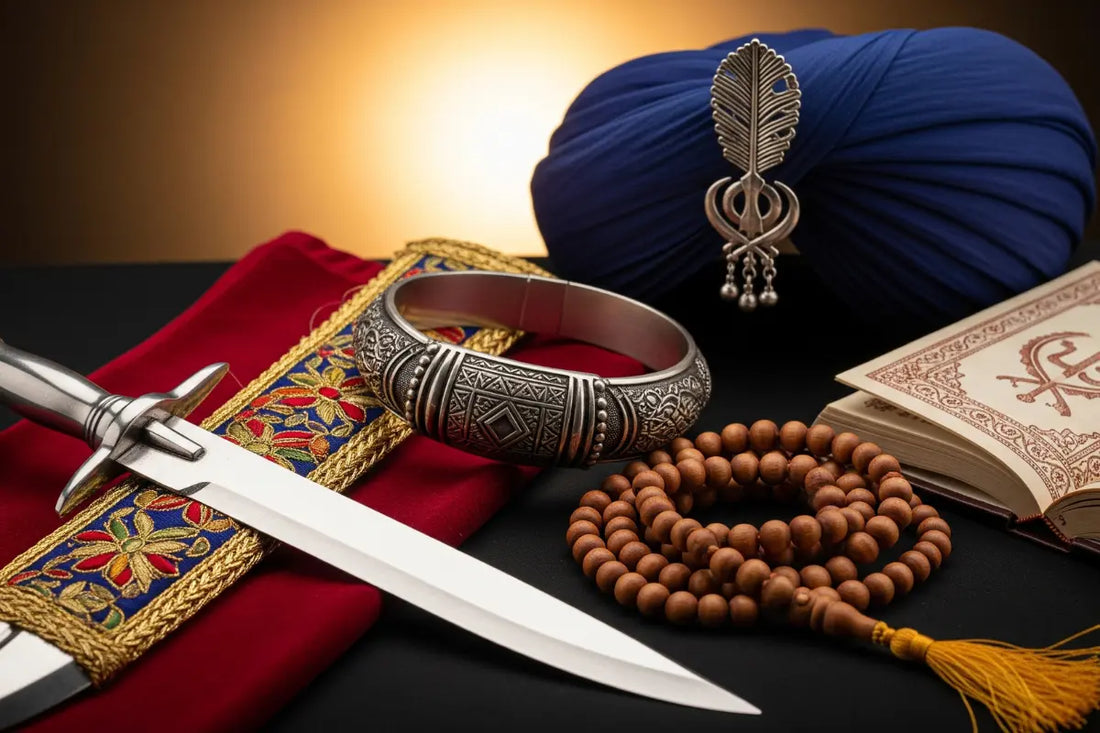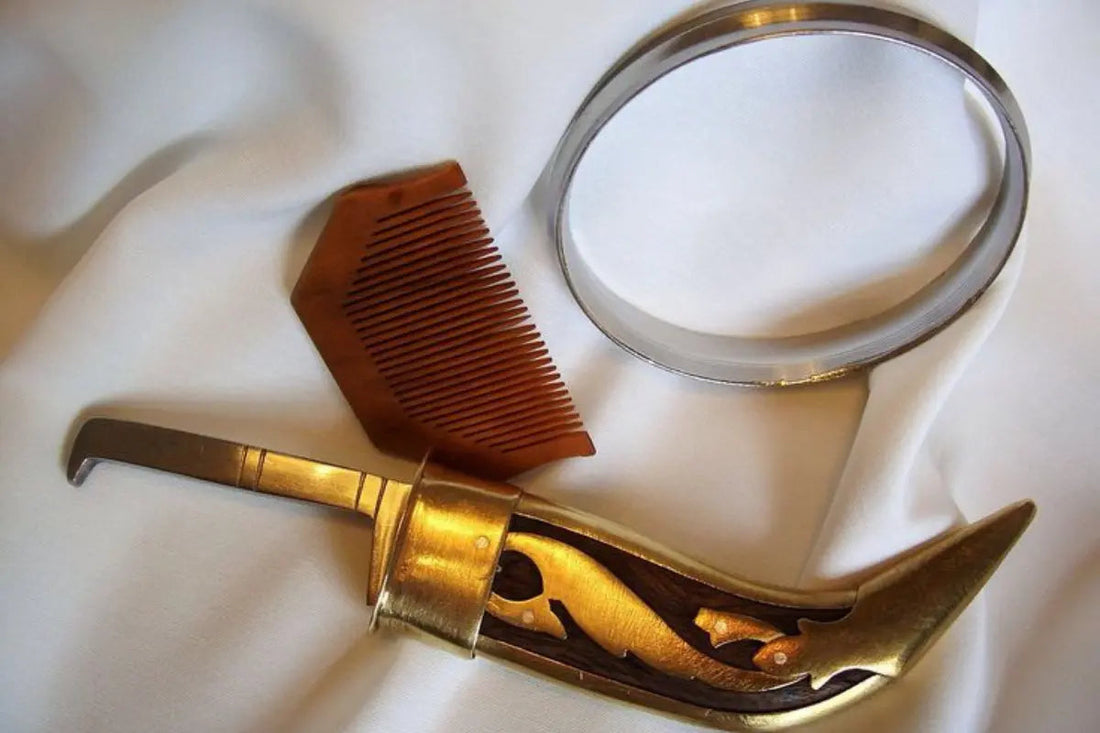For those exploring or deepening their understanding of Sikh practice, certain items hold spiritual and cultural significance that goes beyond their physical form. This article offers an overview of traditional Sikh accessories—what they are, why they matter, and how they are used in daily life. It’s designed to inform both practicing Sikhs and those who wish to respectfully engage with Sikh culture.
1. What Are the Core Accessories in Sikhism and Why Are They Important?
Practicing Sikhs often incorporate specific items into their daily lives, each carrying religious, symbolic, and historical meaning. Among the most recognised are:
- Kirpan: A ceremonial small sword or dagger symbolising courage and a commitment to protect others. It is one of the five Ks (Kakars) worn by initiated Sikhs.
- Kara: A steel bracelet worn on the wrist, representing restraint and a connection to the Guru.
- Kachera: Traditional undergarments signifying modesty and moral character.
- Kanga: A wooden comb, often kept in the hair, symbolising cleanliness and order.
- Kes (Uncut Hair): Maintained to honour the perfection of God’s creation.
Other accessories, such as Sarbloh Bata (iron bowls) and Sarbloh Katar (daggers), are often used in ceremonial contexts and represent the martial and egalitarian traditions within Sikhism.
2. What Is the Significance of Sarbloh (Iron) in Sikh Tradition?
Sarbloh, meaning "pure iron," is frequently used in the construction of Sikh religious items. It represents strength, simplicity, and resilience. The use of Sarbloh has roots in Sikh history, particularly in the time of Guru Gobind Singh Ji, who emphasized the spiritual and physical readiness of the Khalsa.
The tradition of using Sarbloh extends to cooking utensils, weapons, and ceremonial items—each embodying a philosophy of humility, service, and spiritual discipline.
3. How Do These Accessories Support Daily Sikh Practice?
These items are not just symbolic; they are part of a lived, daily spiritual practice:
- Prayers and meditation: Items like the Nitnem Gutka (daily prayer book) guide adherents through structured recitation of Gurbani.
- Physical reminders: Wearing the 5 Ks helps Sikhs maintain their focus on spiritual goals and ethical conduct.
- Ceremonial use: Many items are used during key events such as Amrit Sanchar (baptism), weddings, or Gurpurabs.
Understanding their use helps appreciate the depth of Sikh devotion and the role these items play in reinforcing community and personal identity.
4. How Can These Items Be Respected by Non-Sikhs?
If you are not Sikh but are interested in these practices or items, the most respectful approach is through education and awareness. Avoid wearing or displaying sacred items like the Kirpan or Kara without understanding their significance. Engage with Sikh culture through reading, visiting Gurdwaras, or speaking with members of the community.
5. Supporting Ethical and Faith-Aligned Craftsmanship
If you're looking to acquire any Sikh accessories—whether for personal practice or as part of a cultural or educational exploration—consider sourcing them from organisations that prioritise ethical practices and support the Sikh community. Many such providers contribute to charitable causes and operate with transparency and respect for tradition.
Sikh accessories serve as tangible connections to a rich spiritual heritage. They are more than objects—they are reminders of values, commitments, and community. Whether you are practicing or learning, taking the time to understand these items helps foster deeper respect and meaningful engagement.





